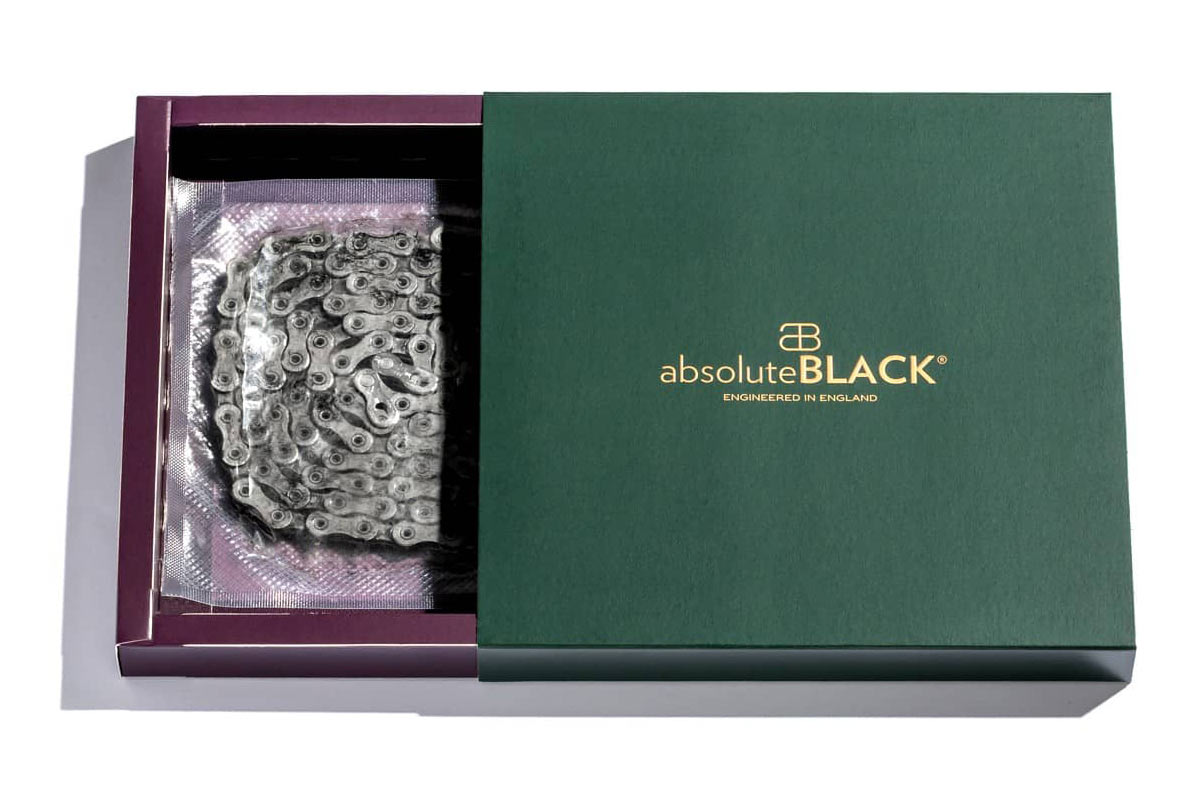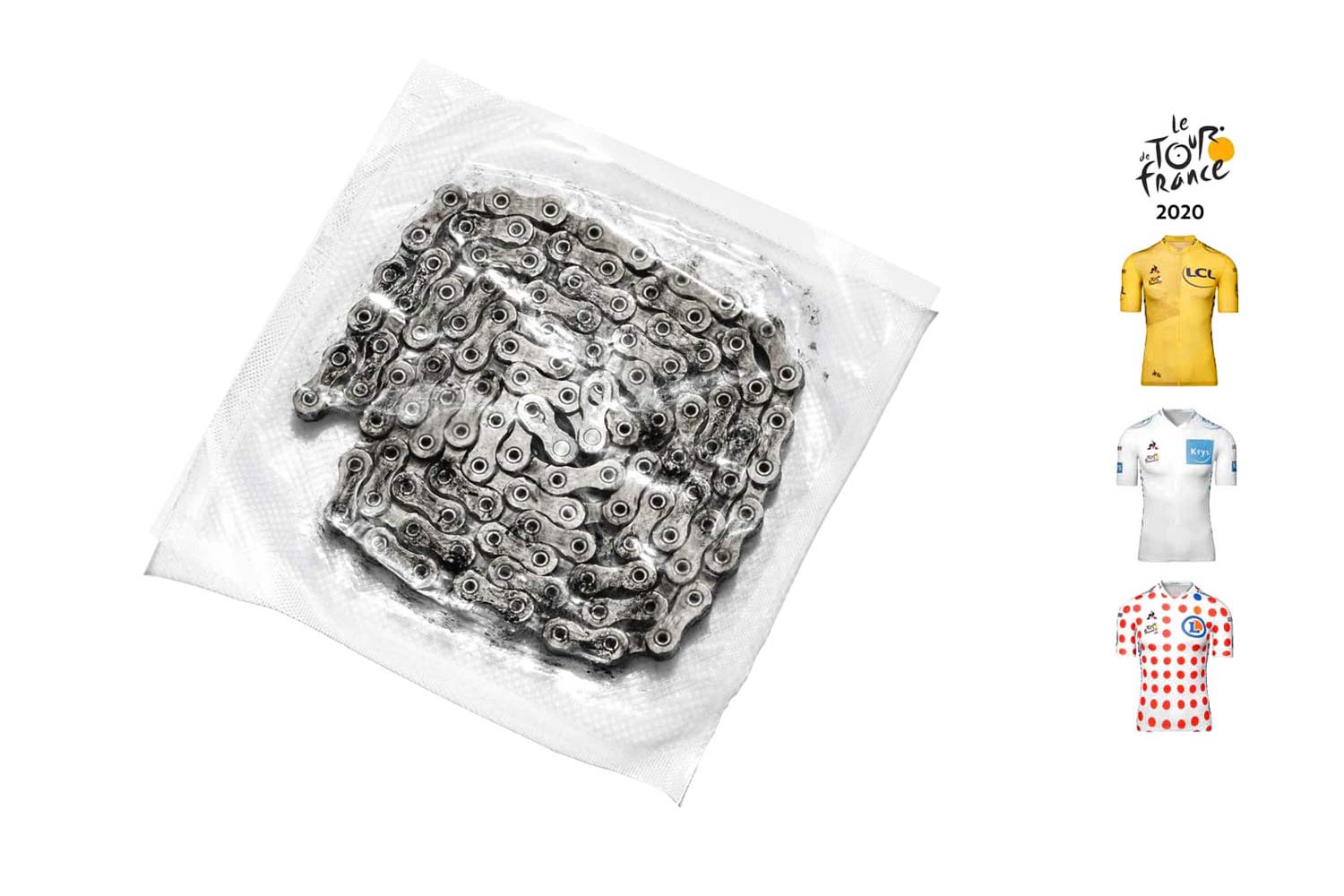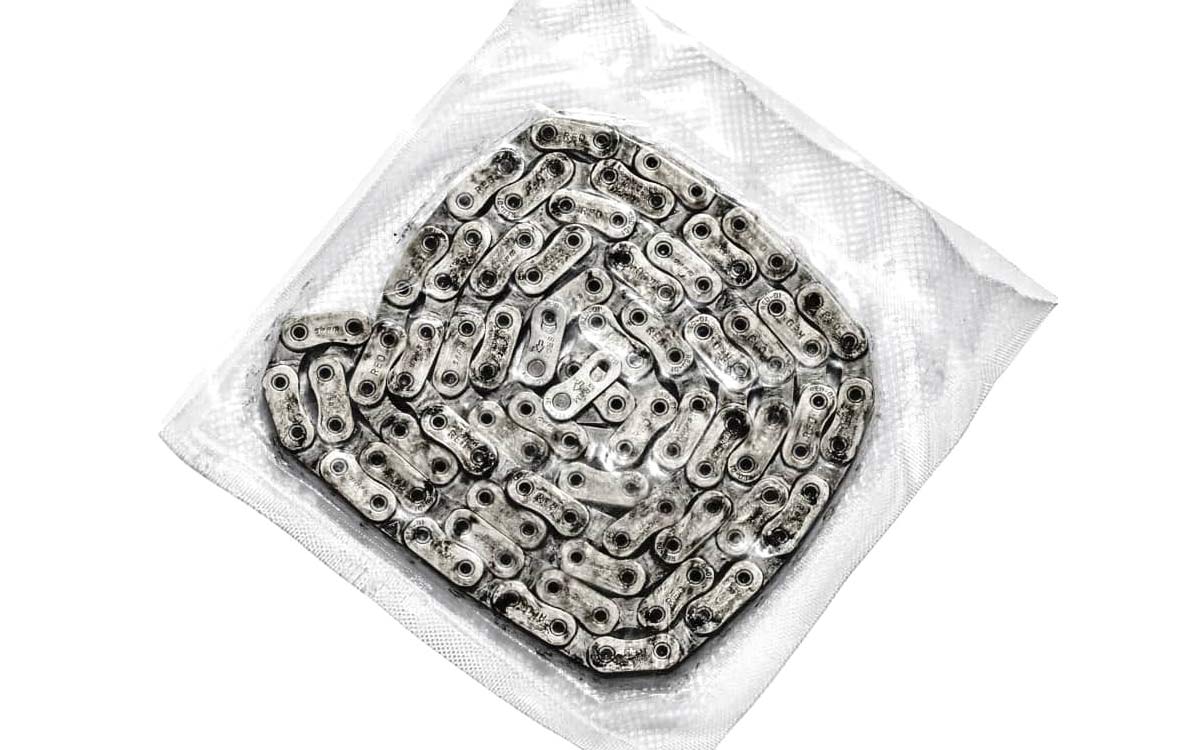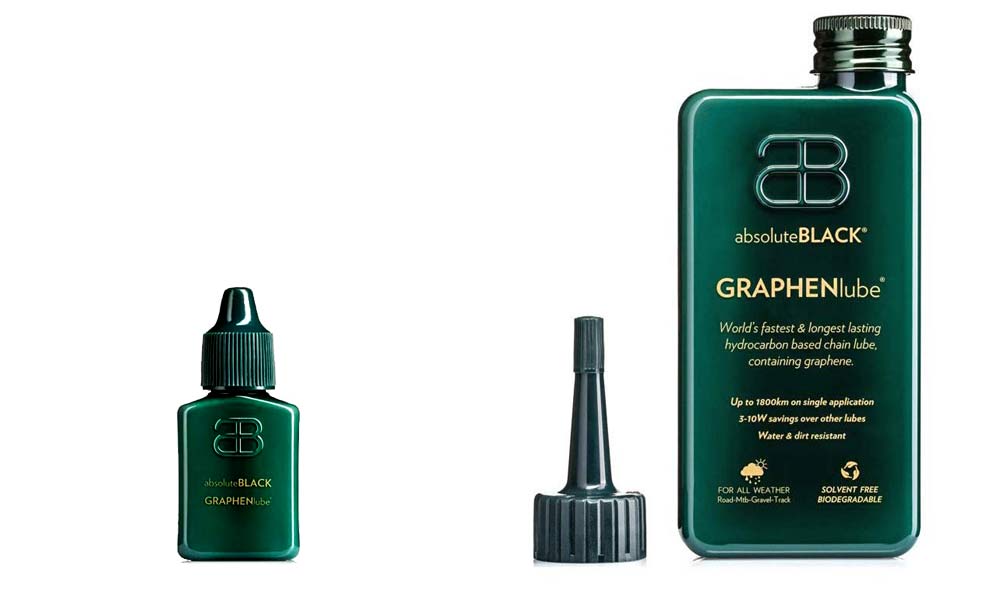After Grand Tour-winning success at the Tour de France, absoluteBLACK is bringing that top level of drivetrain efficiency to the public with pre-lubed GRAPHENlube chains.
Their unique graphene-infused wax chain lube claims to be the fastest on the market. But, with optimal performance being very much dependent on perfect application, your results may vary… at least until now.
absoluteBLACK GRAPHENlube drag-free chain
Debuted just four months ago, AbsoluteBlack’s new ultra-low friction liquid wax GRAPHENlube claims to be the “world’s fastest” and “longest-lasting” chain lube in existence. But that apparently only really applies if you apply it correctly.

AbsoluteBlack tells us that during the development of GRAPHENlube, it became apparent how critical the initial application of any lubricant was on friction reduction & long-term durability. Being sure that you entirely remove any original factory grease or anti-rust protection, and then perfectly applying the new lube, ultimately determined how many watts you could save.
And, they emailed us to say that the graph above shows the drag reduction performance with a good “at home” application. With their vacuum-prepped factory application, the results are supposedly even better.
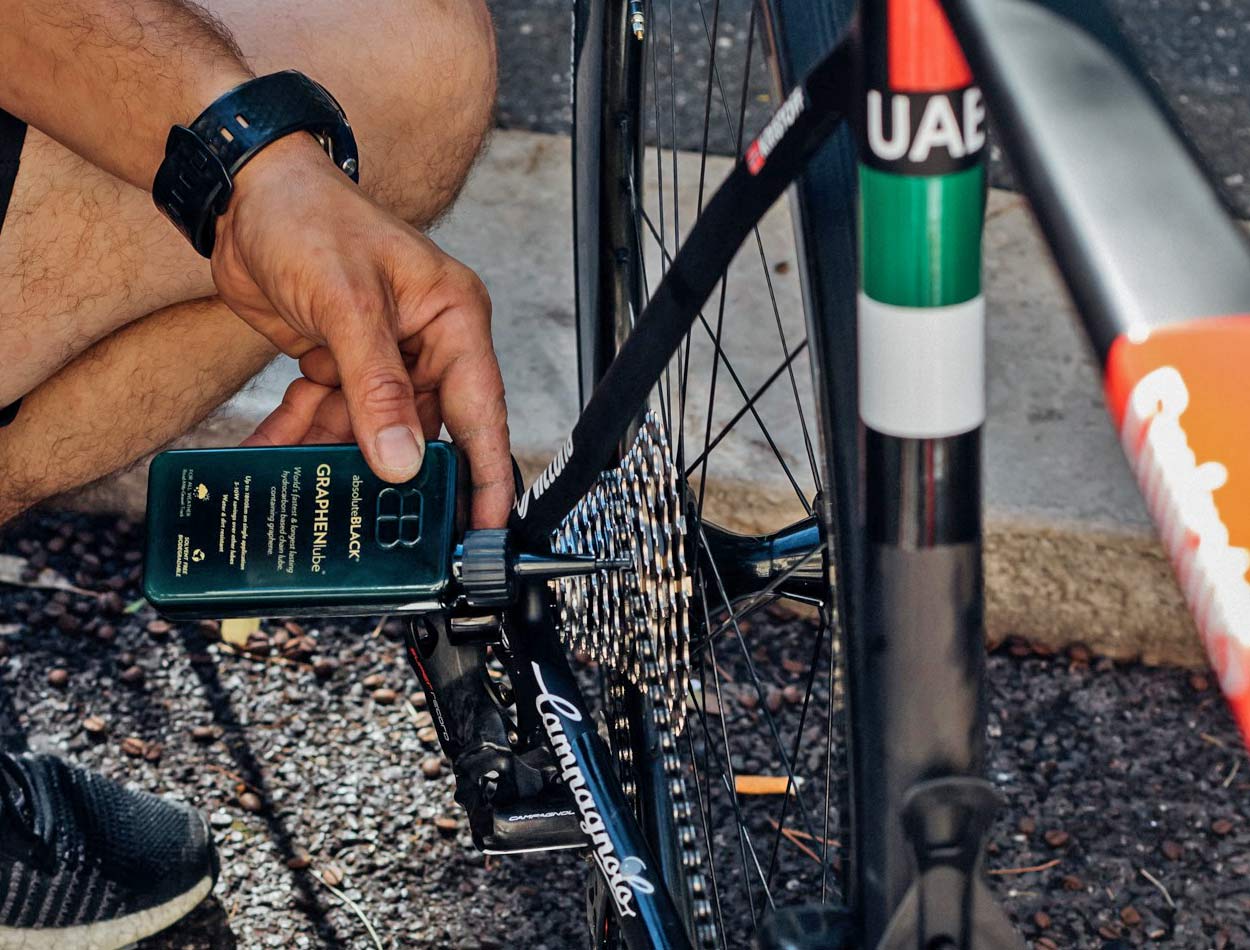
To make their lubricant perform optimally and consistently for the Pro Tour teams they supply with GRAPHENlube (for example UAE Team Emirates & Team Jumbo Visma, among others that AB apparently can’t officially tell us about), AbsoluteBlack developed their own chain preparation and application process – said to go far beyond even home ultrasonic techniques.
They won’t tell us (or you) exactly how they squeeze extra precious free watts out of their lube versus what you can do at home. But, they’ve hinted that it is a “vacuum-ultrasonic” stripping process, after which the chain is oven-dried, then a “multi-stage vacuum process” to coat every surface of the chain with GRAPHENlube.
GRAPHENlube chain – Pricing & availability
So, if you don’t have an ultrasonic bath and vacuum chamber at home, now for a limited time AbsoluteBlack will just sell you a pre-lubed chain – for that pro-level, low-drag performance. Same as they do for the pros.
Two different options of the pre-lubed GRAPHENlube chain are available – a 140€ SRAM Red Flattop 12-speed chain (standard retail 70€) or a Shimano Dura-Ace HG901 11-speed chain (regular retail 59€). The chains are vacuum packed to preserve ideal lubrication for long-term storage – just crack it open before your next race.
Also, for a limited time, AbsoluteBlack will give you a 30% discount on either size bottle of GRAPHENlube if you bundle it together with a pre-lubed chain.
